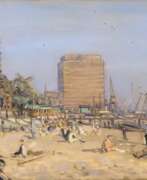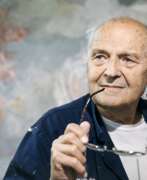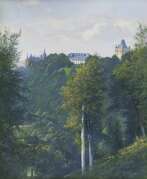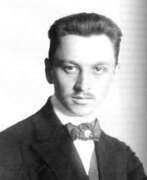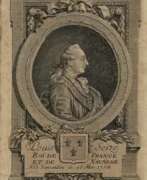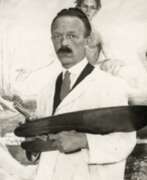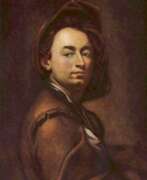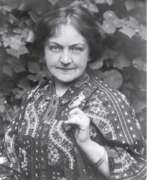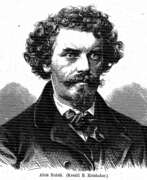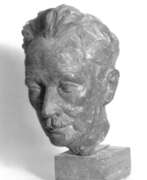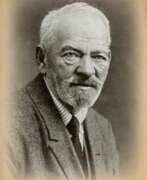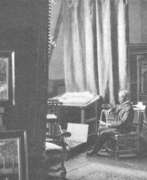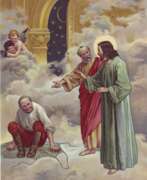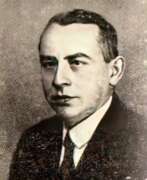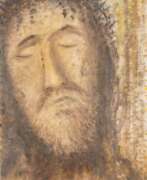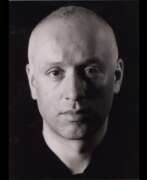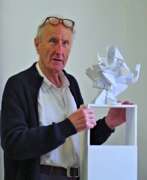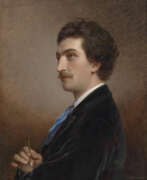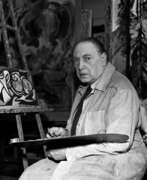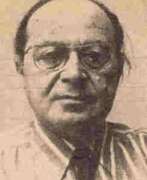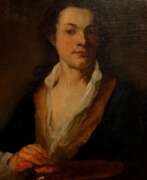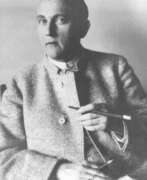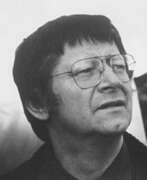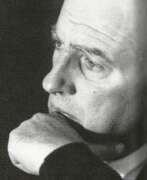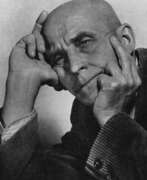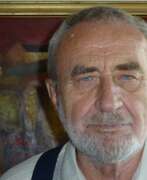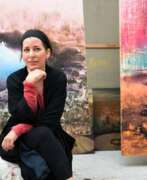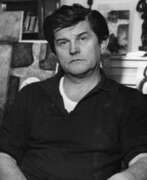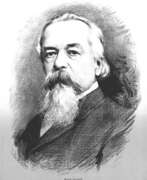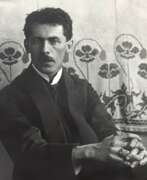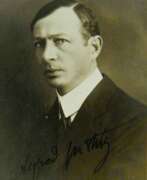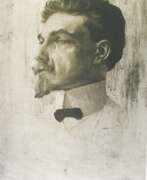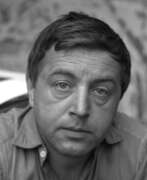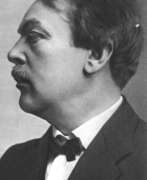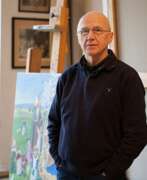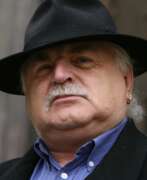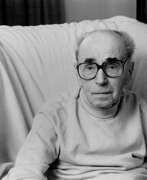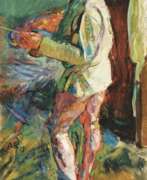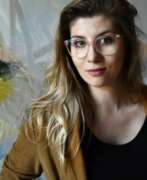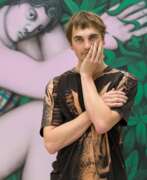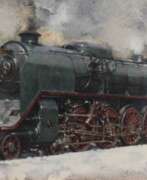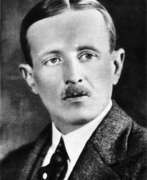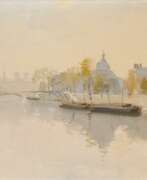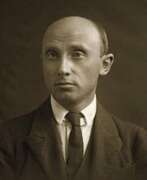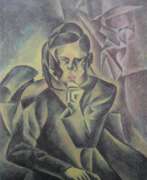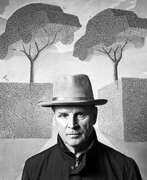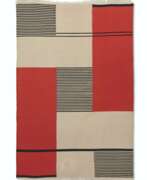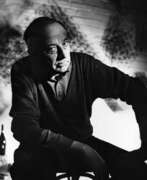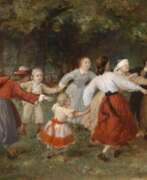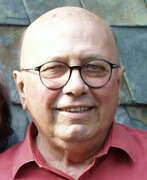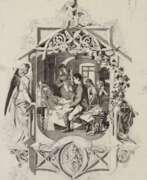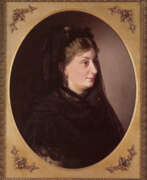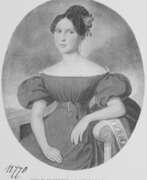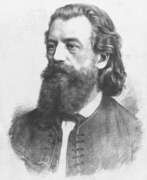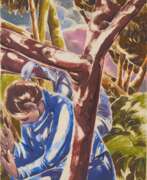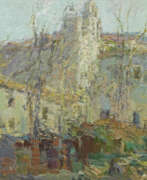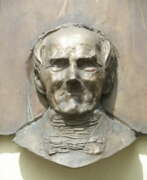Painters Czech Republic


Hannes Beckmann is a German-Czech-American painter. From 1928 he studied painting at the Bauhaus in Dessau, his teachers included Josef Albers, Paul Klee and Wassily Kandinsky. Hannes Beckmann is best known for painting landscapes.
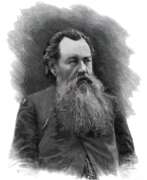

Karel Brož (Russian: Карл Осипович Брож) was a Czech and Russian artist, renowned for his detailed illustrations and watercolors. Born on November 25, 1836, in Prague, he studied at the Vienna Academy of Fine Arts and later moved to Russia, where he became a prominent illustrator for various publications, including "Vsemirnaya Illustratsiya."
Brož's work is characterized by its meticulous attention to detail and vibrant depictions of historical and everyday scenes. His illustrations, particularly for Russian periodicals, captured the essence of 19th-century life and remain highly regarded in art circles.
Collectors value Brož's pieces for their historical significance and artistic quality. His illustrations have been featured in numerous exhibitions and are part of prestigious collections. For those interested in historical illustrations, Karel Brož’s work offers a unique glimpse into the past.
Sign up for updates on new product sales and auction events related to Karel Brož to stay informed about the latest opportunities to acquire his work.
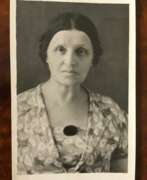

Lyudmila Davidovna Burliuk-Kuznetsova (Russian: Людмила Давидовна Бурлюк-Кузнецова) was a pivotal figure in the Russian avant-garde movement, born into a family renowned for its contribution to art and poetry. Her journey into the art world began with her studies at the Higher Art School of Painting, Sculpture, and Architecture at the Imperial Academy of Arts in St. Petersburg from 1903 to 1907. During her studies, she married Vasily Kuznetsov, a master of monumental and decorative sculpture, which marked the beginning of her active engagement with the Russian art scene. She was a vibrant participant in exhibitions across Russia, including those by the Association of Kharkov Artists, the Union of Russian Artists in St. Petersburg, and the art group "Wreath-Stefanos".
After a flourishing start, the mid-1910s saw Burliuk-Kuznetsova stepping back from her artistic endeavors to focus on her family. The tragic death of her husband in 1923 due to typhus left her to support their four children through her art, creating a diverse range of works from portraits to poster designs, even for the Saratov circus. Despite the personal hardships and the loss of two sons during World War II, her resilience and dedication to art never waned.
In her later years, she moved to Prague to live with her sister Marianna, where she rediscovered her passion for art and held a personal exhibition in 1967. Her work, deeply influenced by impressionism and particularly by the works of Paul Cezanne and Camille Pissarro, demonstrated her exceptional talent and her ability to capture the subtle interplay of light and atmosphere, conveying the magic of unpretentious natural motifs with grace and sensitivity.
For collectors and experts in art and antiques, Burliuk-Kuznetsova's story is not just one of artistic achievement but also of profound personal strength and perseverance. Her legacy is a testament to the vibrant spirit of the Russian avant-garde movement and its enduring influence on the art world.
To stay updated on artworks and auction events related to Lyudmila Davidovna Burliuk-Kuznetsova, consider signing up for updates. This subscription will ensure you're informed about new sales and exhibitions, keeping you connected to the legacy of this remarkable artist.
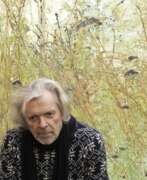

Jiří David is a contemporary Czech artist working in various techniques, including painting, sculpture, installation and photography. Co-founder of the art group Tvrdohlaví . His most famous media work is the neon heart over Prague Castle at the end of the last term of President Václav Havel.
Jiří David studied at the Prague Academy of Fine Arts. His work is characterised by a conceptual approach and a critical engagement with art history and social issues. He often creates large-scale installations that engage the viewer and explore the relationship between art and its audience.
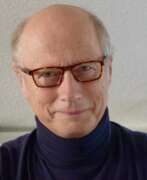

Simon Dittrich is a German painter and graphic artist who lives and works in Stuttgart, Munich, Tuscany and Styria.
Dittrich studied painting at the University of Fine Arts in Berlin, is a member of the Munich and Darmstadt Secession, and a member of the Sudeten-German Academy of Sciences.
Simon Dittrich's early works are dominated by landscapes, animals and still lifes, characterized by varied color and clear lines that emphasize contours. His later works, however, gravitate towards figurative concepts with an abstract tendency.
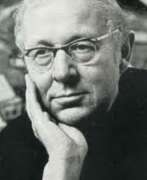

Frantisek Emler was a Czech painter, draftsman, graphic artist, illustrator, and stage designer.
He studied at the Academy of Fine Arts in Prague, was a student at the Academy of Fine Arts in Rome, and then at the Ecole Nationale Supérieure des Beaux-Arts in Paris.
Emler painted still lifes and portraits, but his main subject was landscape painting. He was the author of sets for several opera and theater productions and also illustrated several books.
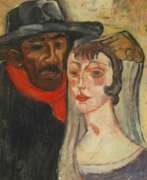

Michel Fingesten, a Czech-Austrian artist of Jewish origin, was an important graphic artist and designer of 20th century bookplates. In the world of bookplates he is often compared to Picasso, and he embarked on a varied artistic career.
Fingesten studied at the Academy of Fine Arts in Vienna, travelled the world and refined his craft in Munich. In 1913 he settled in Berlin and devoted himself to etching. In his private life he married and became a father, while his art flourished with contributions to silent films and over 500 bookplates. Fleeing Nazi persecution, he settled in Italy in 1935, but was interned there. After liberation, he returned to painting and died in Cerisano, Calabria in 1943.


Georg Flegel was a German painter, best known for his still-life works.
According to the RKD he was pupil of Lucas van Valckenborch in Linz during 1582-1592. In a period of about 30 years (c. 1600–1630), he produced 110 watercolor and oil pictures, mostly still-life images which often depicted tables set for meals and covered with food, flowers and the occasional animal.
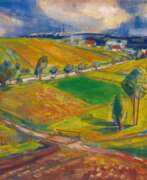

Jaroslav Grus was a Czech painter, graphic artist, illustrator and engraver. He was influenced by Impressionism and Post-Impressionism at the beginning of his career. During study trips to Germany and France (1922-1925), he gained experience and knowledge of Fauvism, thanks to which he developed his own concept of landscape painting.


Johann Hamza was an Austrian genre painter.
Johann Hamza showed a talent for drawing at an early age, then studied painting at the Vienna Academy of Fine Arts and became a leading genre painter in Vienna in the second half of the 19th century.
His son, Hans Hamza (1879-1945), was also a well-known painter.
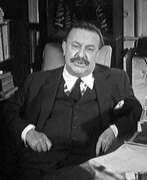

Adolf Hoffmeister (1902-1973) was a Czech artist, writer, journalist, playwright, translator, and diplomat, renowned for his multifaceted contributions to culture and art. His early career saw him collaborate with significant figures in the art world, including Philippe Soupault and Jaroslav Ježek. In 1928, Hoffmeister made his mark with a solo exhibition in Paris and became involved in various literary and artistic publications, such as Lidové noviny and Literární noviny.
Hoffmeister's art often intersected with his political views. He set up the anti-fascist magazine Simplicus in the 1930s and was a member of the Mánes Association of Fine Arts, where he defended the anti-Nazi artwork of John Heartfield. His life was dramatically affected by World War II; fleeing Nazism, he was interned in Paris and a Moroccan concentration camp before reaching New York in 1941. After the war, he returned to Prague and engaged in diplomacy and academia but faced political ostracization following his pro-reform activities in 1968.
Hoffmeister's work in collage was notable, especially his illustrations for Jules Verne's "Around the World in Eighty Days." He was also known for his libretto for the children's opera "Brundibar" and translating James Joyce’s "Anna Livia Plurabelle." His pieces, such as "Demonstration" (1963) and "Greek village by Syrakus" (1960), are preserved in archives like the Ruth and Marvin Sackner Archive of Concrete and Visual Poetry, illustrating his unique approach to visual storytelling.
For collectors, auctioneers, and art and antiques experts, Hoffmeister's works represent a compelling blend of artistic innovation and historical context. His legacy continues to inspire, and keeping informed about exhibitions or sales of his work is essential for those interested in 20th-century European art and literature.
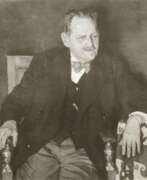

Heinrich Hönich, also known as Jindřich Hönich, was a Czech-German academic artist, graphic designer and teacher.
Hönich studied at the Prague Academy of Fine Arts and the Academy of Fine Arts in Dresden, and lived in Munich from 1906-1928, where he participated in many exhibitions. The artist was mainly engaged in landscape painting and graphics, but also created ex-libris and posters, worked in etching and lithography, was a skillful draughtsman and graphic artist.
From 1928 to 1945 Hönich worked as a professor at the Prague Academy of Art and raised a number of famous artists.
In 1944, Heinrich Hönich was included in the Gottbegnadet list of German artists compiled by the Imperial German Ministry of Public Education and Propaganda under the direction of Joseph Goebbels.
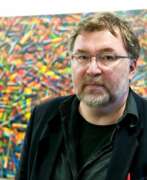

Petr Hrbek is a German artist of Czech origin, who lived and worked in Germany.
Petr Hrbek emigrated with his family to the Federal Republic of Germany as a teenager and studied at a free art school and at the Stuttgart State Academy of Fine Arts. In 1997 he opened his studio in Berlin and participated in many exhibitions in Germany and the Czech Republic.
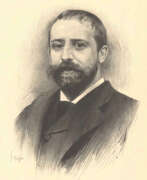

Vojtěch Adalbert Hynais was a Czech painter, designer and graphics artist. He designed the curtain of the Prague National Theatre, decorated a number of buildings in Prague and Vienna, and was a founding member of the Vienna Secession. He was made an Officer of the Légion d'honneur in 1924.


Olaf Jordan was a German and Swedish painter of the first half of the twentieth century. He is known as a portrait painter.
Jordan was attached as a war artist to the collaborationist SS Cossack Cavalry during World War II and created many portraits of Cossacks. Some of his work was confiscated by the Americans, who judged the drawings to be apologia for the Nazi regime. Jordan himself remained in Soviet captivity until 1947, after which he moved to Sweden, where he painted mostly portraits of children. Before the war, he worked on a series of depictions of Yugoslav folk types.
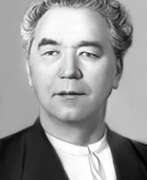

Vasyl Illich Kasiyan (Russian: Василий Ильич Касиян) Vasyl Illich Kasiyan was a Ukrainian artist and graphic designer, celebrated for his contributions to Soviet and Ukrainian visual arts. Born on January 1, 1896, in Mykulyntsi, then part of Austria-Hungary, and passing on June 26, 1976, in Kyiv, Ukrainian SSR, Kasiyan's journey through art was marked by his distinct influence on Soviet-era visual narratives. A World War I veteran, he further honed his artistic skills at the Academy of Fine Arts in Prague in the 1920s under the mentorship of Czech painter Max Švabinský.
Kasiyan's body of work spans various mediums, reflecting the ethos of his times with a deep focus on people, their struggles, and the landscapes they inhabit. Notably, his artworks such as "Portrait of a Young Woman" (1950), "Taras Shevchenko" (1945), and "My Mother" (1940) underscore his mastery in capturing the essence of his subjects, rendering them with an emotional depth that speaks volumes about his connection to the cultural and political landscape of the Soviet Union.
His contributions were widely recognized, earning him titles like the People's Artist of the Soviet Union and the Shevchenko National Prize in 1964, affirming his status as a pivotal figure in Soviet and Ukrainian art. Kasiyan's legacy is not just in the beauty of his works but also in his role as an educator and influencer in the art community, contributing significantly to the National Academy of Visual Arts and Architecture and the Kharkiv Institute of Arts.
For collectors and experts in art and antiques, Vasyl Illich Kasiyan's works represent not only aesthetic beauty but also a historical narrative of the Soviet and Ukrainian people's resilience and spirit. His pieces, found in museums and galleries worldwide, continue to inspire and provoke thought, offering a window into the artist's profound connection with his heritage.
To stay updated on exhibitions and sales featuring Vasyl Illich Kasiyan's art, sign up for our newsletter. This subscription ensures you're the first to know about new discoveries, auction events, and exclusive sales related to this esteemed artist's works.


Alois Kirnig is a German-Czech landscape painter and illustrator.
He studied at the Academy of Fine Arts in Prague, then at the Munich Academy of Fine Arts. The main subject of Kirnig's work is picturesque castles and landscape views of Bohemia and Germany, Austria and Italy. He also created many illustrations for magazines.
In 1866, Kirnig founded his own school of landscape painting. He was also the Czech forum for creative artists Umělecká beseda ("Artistic Discussion").
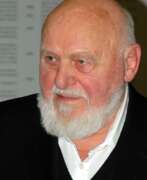

Jan Koblasa was a Czech sculptor, painter, graphic artist, author of philosophical essays and university lecturer. He studied at the Prague Academy of Fine Arts.
Jan Koblasa was a professor of sculpture at the Mufeus Art Academy in Kiel from 1969 to 1997. His lessons included traditional plastic forms of expression, such as portraits, figures and nudes, but he also gave his students great freedom for further artistic activity.
From 2002 to 2005, Koblasa taught as professor emeritus of sculpture at the Academy of Fine Arts in Prague.


Vladimir Kokolia is a Czech painter-engraver, poet and lyricist, professor at the Academy of Fine Arts in Prague.
A versatile and talented artist, Kokolia has mastered many painting and graphic techniques and is known for his color linocuts.


Jan Kotík was a Czech artist active from the 1940s.
Kotik was a member of Skupina 42 during World War II. Following the war his art was influenced by Chinese calligraphy. In 1956 he attended the Congress of Alba and signed up to the Final Resolution of the Alba Congress.
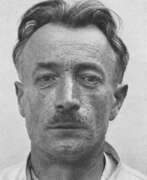

František Kupka was a Czech painter and graphic artist. He was a pioneer and co-founder of the early phases of the abstract art movement and Orphic Cubism (Orphism). Kupka's abstract works arose from a base of realism, but later evolved into pure abstract art.
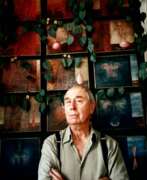

Josef Lehoucka is a Czech surrealist and abstractionist painter.
A close connection between realism and fantasy is a characteristic feature of Josef Lehoucka's paintings. In his youth he was a factory worker, a crane operator, which was reflected in his visual art. Lehoucka often painted fantastically realistic paintings, which he complemented with industrial motifs. His past experiences are recalled in replicas of machines, tongs, and cylinders, geometrized and incorporated into abstract compositions. Against this mechanized reality, however, the Surrealist tradition is strong, bringing elements of chance and the unexpectedness of dreamlike objects and landscapes into the paintings.
Josef Lehoucka's works are represented in the collections of the National Gallery of Prague, the Central Czech Gallery of Prague and others.
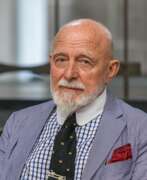

Markus Lüpertz is a German painter, sculptor, graphic artist, and writer. He also publishes a magazine, and plays jazz piano. He is one of the best-known German contemporary artists. His subjects are characterized by suggestive power and archaic monumentality. Lüpertz insists on capturing the object of representation with an archetypal statement of his existence. His art work is associated to neo-expressionism. Known for his eccentricity, German press has stylized him as a «painter prince».
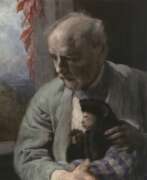

Gabriel Cornelius Ritter von Max was a Prague-born Austrian painter.
Gabriel von Max was a significant artist to emerge from the Piloty School, because he abandoned the themes of the Grunderzeitliche (genre and history), in order to develop an allegorical-mystical pictorial language, which became typical of Secessionist Art.
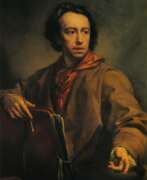

Anton Raphael Mengs was a German painter, active in Dresden, Rome, and Madrid, who while painting in the Rococo period of the mid-18th century became one of the precursors to Neoclassical painting, which replaced Rococo as the dominant painting style in Europe.
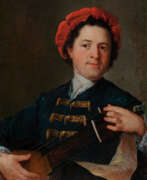

Johann Petr Molitor (born Johann Peter Miller) was a German painter of the mid-eighteenth century, late Baroque period. He is known as a painter and master of frescoes who lived and worked in Prague for most of his career.
Molitor (Miller) studied painting in various German cities and moved to Prague in 1730. Later, after converting to Catholicism, he began signing his paintings as Molitor. The artist was admitted to the Old Town Society of Artists and was famous for his portraits, landscapes and paintings on sacred and allegorical themes. He also created many church paintings and frescoes. He learned the art of fresco painting in Prague.
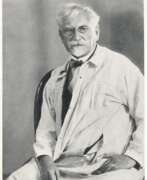

Alfons Maria Mucha, a Czech Art Nouveau painter and decorative artist, was celebrated for his innovative contributions to art, particularly his distinctive style that became synonymous with the Art Nouveau movement. Born in 1860 in the Moravian town of Ivancice, Mucha exhibited artistic talent from a young age, initially showing a proclivity for drawing and music, which were closely intertwined in his perception of creative expression. Despite early financial and educational hurdles, Mucha's passion for art led him to Vienna and subsequently Munich, where he honed his skills and absorbed influences that would shape his future work.
Mucha's career took a pivotal turn in Paris, where his poster for the actress Sarah Bernhardt's play "Gismonda" gained him immediate fame. This partnership with Bernhardt catalyzed a prolific period during which Mucha produced a flurry of artworks, including paintings, posters, and illustrations, as well as designs for jewelry, wallpaper, and theatre sets. His works are characterized by their depiction of beautiful young women in flowing robes, surrounded by lush, natural elements and often featuring pastel colors—a stark contrast to the bold hues preferred by his contemporaries.
Despite his commercial success, Mucha aspired for his art to convey a deeper spiritual message rather than merely adhering to the trendy Art Nouveau style. This led him to undertake projects that were more personal and culturally significant, such as "The Slav Epic"—a series of paintings celebrating Slavic history. Mucha's legacy is not only preserved in his diverse body of work but also in his influence on the aesthetic values of craftsmanship and design.
Collectors and experts in art and antiques continue to venerate Mucha for his unique ability to blend artistic beauty with cultural expression. His works, which are housed in museums and galleries worldwide, remain a testament to his vision and creativity.
For those keen on exploring the world of Alfons Maria Mucha further and staying updated on new sales and auction events related to his work, signing up for updates is an excellent way to ensure you never miss an opportunity to appreciate or acquire pieces related to this iconic artist. This subscription is tailored for collectors and art enthusiasts, focusing solely on new product sales and auction events concerning Mucha's legacy.
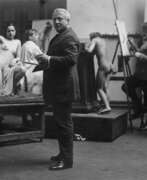

Richard Müller was a German painter and graphic artist. His artistic talent was evident early on. In 1893 he became self-employed as a painter in Dresden. In the fall of 1894, Müller exhibited landscape and animal studies for the first time in the Ernst Arnold Art Salon. In 1895 he met Max Klinger, who encouraged him to study etching techniques. In 1896 he was represented by Arnold at the exhibition "Hand Drawings of German Artists" and won the Grand Rome Prize of the Prussian Academy of Arts, endowed with 6000 gold marks, for his etching "Adam and Eve". In 1900 he received a professorship at the academy, meanwhile as well known in Dresden as Klinger. Müller was highly valued as a painter during the National Socialist era.
